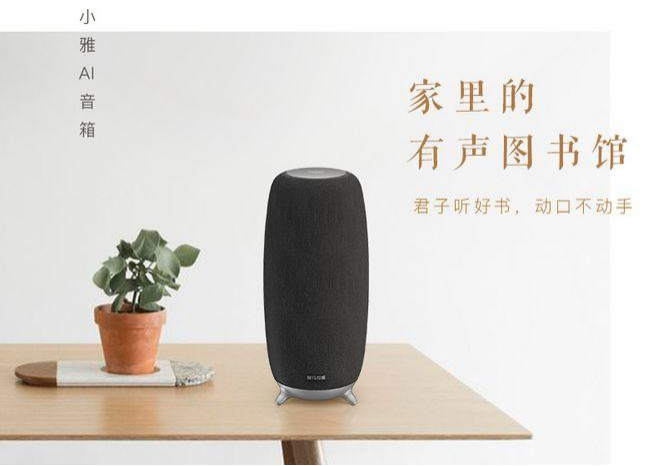Himalaya needs to prove the “huge growth potential” of audio
Editor’s note: This article is from the WeChat public account “AKA桃叨叨” (ID: Taodaokaixiang), author: Xiaoling.
On this heavy Monday, apart from buying KFC’s new chicken stand, Sister Nao chose to open the Himalayas to listen to the radio drama “Three Body” at night. It feels so good to escape the world for a short time (not to)!
In order to develop the residual value of the super IP, Himalaya also jointly sold the “Three-body” stamp in April in cooperation with San-body Universe and China Post. The commercialization of the audio market does require hard work and hard work. Earlier this month, Himalaya submitted a prospectus to the United States Securities and Exchange Commission (SEC) for its listing under the stock code “XIMA”.
The prospectus data shows that the latest active users of Himalaya reached 250 million in the first quarter. The average monthly active mobile paying users was 13.9 million, but the payment rate was only 13.3%.
The IPO, which was denied several times, is finally settled, but at the same time, Himalaya has suffered losses for three consecutive years, which has become one of the biggest concerns of the outside world for the audio industry after this prospectus.
——The net losses in 2018, 2019 and 2020 were 773.7 million yuan, 773.3 million yuan, and 605.1 million yuan, respectively. The net loss in the first quarter of 2021 reached 267.2 million yuan.
There are not many cases of loss-making listings, but such numbers will also make Himalayas and even the entire audio industry an unavoidable question-how does a single revenue support profit? How to deal with the user ceiling? The higher and higher marketing expenses have not brought positive user growth? Wait a moment.
In the pattern of the giant invasion and the convergence of various audio audio content, from burning money for growth to profit model transformation, Himalaya has to verify the so-called “huge growth potential” of the audio industry.
After all, Lichee (LIZI.US) was listed on the stock market on January 17 last year, becoming China’s first online audio stock, but in only one year, its market value has shrunk significantly. Litchi failed to show a comeback. After getting the funds, can the Himalayas give new answers? But overall, HimaRaya’s revenue has maintained a relatively rapid growth rate.
Low payment rate,Beyond profit difficulties,Copyright issues may become the biggest constraint in the next step
In the past ten years in the audio field, many players have fallen. Koala FM, Douban fFM, Duoting FM, etc. have not been able to hold on, and the challenges that the Himalayas, Lychee and Dragonfly have been facing until now are It is more than an invasion by an external manufacturer.
According to HimalayaIn the prospectus, its revenue mainly consists of five parts: paid subscriptions, advertising, live broadcasting, educational services, and other innovative products and services.
The revenue data for 2020 is 4.05 billion yuan, of which paid subscriptions contributed 1.7 billion yuan in revenue, advertising and live broadcast business contributed 1.07 billion yuan and 720 million yuan in revenue respectively, and the growth rate of advertising revenue was as high as 73.9%; Education services, other innovative products and service revenues were 230 million yuan and 280 million yuan, respectively.
The Kuwochang listen from the goose factory next door has begun to explore the video content of the playback page. Tao Nao clicks on his favorite content in the Himalayas. In addition to the advertisements, the page also sets up fancy advertisements-watching videos as favorite anchors Hit call. Although advertising has attracted a lot of negative reviews for Himalaya’s user experience, selling advertising is much easier than making users pay.
It can be seen that paid subscriptions are the core of Himalaya’s revenue, accounting for 43.3%, a decline from 46.3%. But its advertising revenue growth rate has reached 73%. The content platform’s ridicule that “the wool comes from the pigs and the dog pays for it” is sad, but it is true.
Currently, Himalaya mainly provides three types-PGC, UGC, PUGC. In 2020, there will be 2,100, 5.15 million and 4,600 active creators of related content, and the proportion of content is about 0.16%, 99.67% and 0.17%. .
And the Himalaya prospectus wrote:
High-quality content can play a role in attracting new, retaining, and stimulating users to pay; the content in the middle and bottom plays a role in maintaining user activity, increasing the vitality of the platform, and cultivating high-quality ecology and content producers for the platform .
PUC, PUGC, UGC, which part is high-quality content? Anyway, there is a high probability that it will not be UGC, which accounts for 99.6%. In other words, the business logic of Himalaya so far is that PGC and PUGC content, whose content accounted for no more than 0.5%, are currently the key content sectors for increasing subscription payment rates.
After all, the problem of UGC profit model, the lychee rooted in this field, cannot give the capital market an optimistic answer, 99%Income comes from rewards.
From the perspective of the cost ratio from 2018 to 2020, most of Himalaya’s money is spent on marketing and revenue sharing. In 2020, Himalaya will cooperate with more than 160,000 content creators and third-party IP copyrights to share With a revenue share of 1.3 billion, this cost increased by 43.9% year-on-year.
Although the prospectus does not disclose the detailed cost and expenditure ratio, which is more expensive for 160,000 content creators and third-party IP copyrights? Let’s ask another question. Who is more expensive for Deyunsha, Santi, etc., Huan Yingkong, Zijin with sound, and other podcast dubbing?
In the story field of the Internet, it is not difficult to guess. Himalayas have to pay for the head of the copyright, the cost of the content of the head, this number sounds familiar.
It is inevitable to burn money for traffic and grab the copyright of the head content. After all, head copyright content often means activity and payment rate to a large extent, and the online music next door is playing more fiercely. The high customer acquisition cost and content procurement cost resulted in a huge loss for three years.
In the first quarter of 2021, Himalaya’s user payment rate reached 13.3%, an increase from 1.8% in the same period in 2018 and 4.3% in 2019, and 7.9% in 2020. But in 2020, Himalaya’s marketing expenditure reached 1.68 billion yuan, an increase of 40% year-on-year. It is difficult for people not to associate the growth of the payment rate with the replacement income of burning money side by side.
What’s more, the UGC content that underpins the Himalayan content sector is still falling into copyright turmoil. According to Sina Finance, since 2014, Himalaya has been prosecuted more than 1,000 times for copyright issues, and content involving infringement includes audiobooks such as “Douluo Dalu”, “Zuo Er”, “Zhen Huan Biography” and so on.
In this regard, relying on Tencent and Byte, Kuwochang and Tomato, which are supported by Wenwen and Tomato Novels, are indeed more advantageous.
The giants enter, and the defense of the old three is not easy. Is the blue ocean of long audio going to change?
“Long audio field is a new outlet”, with the entry of major giants, from last year to this year.
At the beginning of June last year, ByteDance launched the “Tomato Listening” APP, which can directly use the tomato novel copyright library and officially enter the director’s audio. And just two months ago in the same year, Tencent Music Entertainment Group (TME) The product of “Kuowochanglisten” was launched, clearly pointing out that “long audio will be a strategic area where TME will continue to work hard in the future.”
(The screenshot is from the homepage of “Cool Wo Chang Ting”)
After that, Kuaishou announced that it was testing the podcast product “Kayak” in an internal test, and it pointed to the audio market; in September, NetEase Cloud Music launched a new content section “Sound Theater”, featuring radio dramas and audiobooks adapted from young IP; /p>
In December, QQ Music set up a first-level entrance for podcasts, and NetEase Cloud Music also updated the radio entrance to podcasts; in January 2021, TME acquired 100% equity in Lazyren Tingshu, Douyin, to further develop the long audio field. These giants not only hold huge amounts of traffic and funds, but also have a strong business ecosystem to provide support for content. It is not difficult to understand why they are all clamoring that the audio industry is about to change.
On the one hand, there are years of losses of the old three and the slow conversion of the first stock of lychee. On the other hand, the overbearing entry of the giants. The long audio industry will change in the future, which seems to be justified.
It’s so lively, the third oldest family naturally wouldn’t watch.
Since last year, various companies have taken action. The market expectation that “podcasts will move from niches to the masses” once pushed “podcasts” into the renaissance.
——In April 2020, Himalaya released the “Spring Life Program” to provide traffic and financial support for podcast anchors. In August, it launched the “Happy Program” to continue to support the podcast community; in early 2021, Litchi fm went live. The product of “Litchi Podcast” also focuses on podcasting.
Qingting fm, one of the oldest three, will be “listen to all members” on February 5th-all members of Qingting FM can listen to the content of the whole site for free, without the need for a second payment of “promotions”. Pull new.
However, the problem of paying users and payment rate is the problem of the entire content industry. The payment situation of the Himalayan competitors, including video and music, is not much better.
According to Litchi’s financial report for the fourth quarter of 2020, the MAU of Litchi’s mobile terminal is 58.4 million, but monthly paying users are only 422,400, and the payment rate is about 0.72%. Compared with 2019, the proportion of paying users has even declined, and overall revenue Highly dependent on the rake of gift rewards. Litchi’s 2020 full-year financial report shows that this first online audio share has been losing money for 4 consecutive years.
Will Himalaya, who got money from the IPO, join the queue of losses for four consecutive years, or can it turn losses into profits, proving the realizable value of the audio track?
It’s just that it seems impossible to simply monetize the content. The podcasts that everyone is working on collectively are still essentially a business of selling content. Its profit model is nothing more than advertising, paid subscriptions, and delivery of goods is considered a new expansion.
TME, which is almost monopolized in the online music field, relied on strong financial resources and more than ten years of copyright barriers, but only got 8% of the payment rate. Promoting podcasts is more like “you have and I have to have”, and the efforts aimed at the vitality of the basic disk-the anchor ecology.
What’s more, the audio industry has a more powerful opponent-short videos, which compress the information output time a lot and change the audience’s content consumption habits.
In contrast, IoT (Internet of Things) products and other third-party platforms that account for more than half of Himalaya’s monthly activity, the Internet of Vehicles that have already cooperated with more than 60 car manufacturers, and smart speakers and other hardware devices The layout, and the scene-based layout chosen by Dragonfly-with Baidu Apollo Smart Cars and Zebra Zhixing, seems to be more convincing.
However, it should be noted that of the 146 million monthly active users announced by Himalaya, only a fraction of 48.3 million are monthly active users of the Internet of Things and in-vehicle devices. What’s more, it’s not new that Himalayas fancy hardware. As early as June 2017, Himalaya released its first smart speaker “Xiaoya”, but in July of the same year, Xiao Ai and Tmall Elf were born. Failed to leave a name.
In the world of smart speakers, Himalaya loses to the giants, then in the world of podcasts and long audio, how can Himalaya, the top spot in long audio, write new stories in the siege of the giants?







